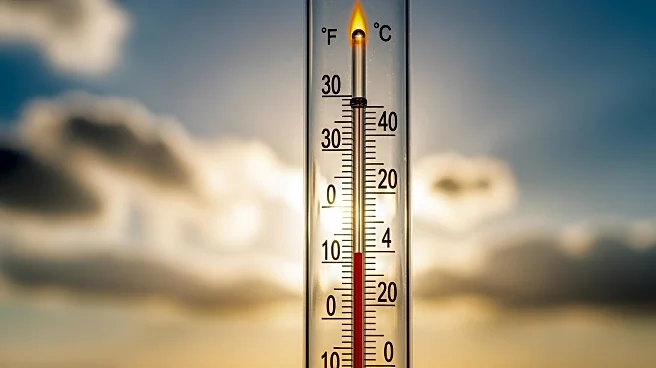What's Happening?
North Texas is experiencing unseasonably warm weather, with temperatures expected to reach the low to mid-80s this week. This weather pattern is characterized by dry and breezy conditions, deviating from
typical fall temperatures. The forecast suggests that these above-average temperatures will persist, impacting daily activities and potentially influencing local climate perceptions. Residents are advised to prepare for the warmer weather, which contrasts with the cooler temperatures usually expected during this time of year.
Why It's Important?
The unusual weather in North Texas has implications for various sectors, including agriculture, energy consumption, and public health. Warmer temperatures can affect crop yields and water resources, posing challenges for farmers. Additionally, increased energy usage for cooling can strain power grids and lead to higher utility bills for residents. Public health concerns may arise, particularly for vulnerable populations such as the elderly, who are more susceptible to heat-related illnesses. Understanding these impacts is crucial for local authorities and residents as they adapt to changing weather patterns.
What's Next?
As North Texas continues to experience above-average temperatures, local meteorologists and climate experts will monitor the situation closely. Residents may need to adjust their daily routines and prepare for potential heat advisories. Authorities might consider implementing measures to mitigate the effects of prolonged warm weather, such as providing cooling centers and issuing public health warnings. The ongoing weather pattern could also prompt discussions on climate change and its impact on regional weather trends.
Beyond the Headlines
The persistent warm weather in North Texas may contribute to broader discussions on climate change and environmental policy. As regions experience shifts in typical weather patterns, there is an increasing need for sustainable practices and policies that address climate resilience. This situation highlights the importance of community engagement and education on environmental issues, encouraging residents to participate in initiatives aimed at reducing carbon footprints and promoting sustainable living.













